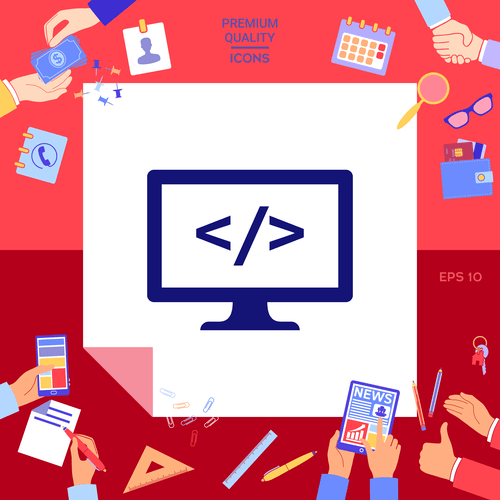Identify and fix broken builds with CI CD pipelines
While the Zero Trust Maturity Model is specifically intended for federal agencies, all organizations should review this guidance and take steps to advance their progress toward a zero trust model. Many chat tools — like Slack or Microsoft Teams — integrate with CI/CD systems to facilitate the creation of these alerts. Failed build alerts should be treated as all-hands-on-deck situations because a failing build severely limits the team’s ability to deploy new software. Such circumstances not only delay new features, but they also block urgent bug fixes from being deployed to production.

Often, builds that were working for a while and then suddenly fail have credential problems. For example, the credentials may no longer be valid, or the permissions for those credentials may have changed. If your IT organization has a dedicated DevOps team, they may be best suited to resolve credential and permissions issues.
Featured in Architecture & Design
Continuous Delivery Maturity Models provide frameworks for assessing your progress towards adopting and implementing continuous integration, delivery and deployment (CI/CD). Leverage Gartner resources to implement foundational, featured, and progressive practices to generate tangible business results. Our team has decades of combined experience helping companies like yours in diverse industries to drive their digital transformations using Microsoft’s powerful solution set. There is a software-defined network with automated validation of experience based on defined policies. A high-availability wireless identity and access management solution and a high-availability wireless enterprise mobile management solution are implemented on premise and in the cloud.
If a system is built with continuous delivery principles and a rapid release mind set from the beginning, the journey will be much smoother. However, an upfront complete redesign of the entire system is not an attractive option for most organizations, which is why we have included this category in the maturity model. At the intermediate level you will achieve more extended team collaboration when e.g. DBA, CM and Operations are beginning to be a part of the team or at least frequently consulted by the team. Multiple processes are consolidated and all changes, bugs, new features, emergency fixes, etc, follow the same path to production. Decisions are decentralized to the team and component ownership is defined which gives teams the ability to build in quality and to plan for sustainable product and process improvements.
teams, and eliminated our release bottleneck.”
Now we know about two critical pieces of information so let’s look at how to choose your practices or assessment metrics for the model. The principles and methods of Continuous Delivery are rapidly gaining recognition as a successful strategy for true business agility. ” How do you start with Continuous Delivery, and how do you transform your organization to ensure sustainable results. This Maturity Model aims to give structure and understanding to some of the key aspects you need to consider when adopting Continuous Delivery in your organization. If you can’t find the problem by checking out the credentials, try to locally reproduce the issue, and then make changes to fix it.

In this category we want to show the importance of handling this information correctly when adopting Continuous Delivery. Information must e.g. be concise, relevant and accessible at the right time to the right persons in order to obtain the full speed and flexibility possible with Continuous Delivery. Apart from information directly used to fulfill business requirements by developing and releasing features, it is also important to have access to information needed to measure https://www.globalcloudteam.com/ the process itself and continuously improve it. Build and deployment is of course core to Continuous Delivery and this is where a lot of tools and automation come into the pipeline; this is what is most is commonly perceived when Continuous Delivery is discussed. At first glance a typical mature delivery pipeline can be very overwhelming; depending on how mature the current build and deployment process is in the organization, the delivery pipeline can be more or less complex.
Continuous Delivery: Beyond the Team Build
After evaluating your organization according to the model you need to set the goals and identify which practices will give your organization the best outcomes. If there are practices you do not want to adopt you need to analyse the consequences of excluding them. It is also important to decide on an implementation strategy, you can e.g. start small using slack in the existing process to improve one thing at a time. However, from our experience you will have a better chance of a successful implementation if you jump start the journey with a dedicated project with a clear mandate and aggressive goals on e.g. reducing cycle time.

Similar to Build & Deploy, maturity in this category will involve tools and automation. However, it is also important to constantly increase the test-coverage of the application to build up the confidence in speed with frequent releases. Usually test involves verifying expected functionality according to requirements in different ways but we also want to emphasize the importance of verifying the expected business value of released features.
Inspired by this content? Write for InfoQ.
Continuous improvement processes never focus on the end state, because perfection, however it’s defined, can only be incrementally approached, never fully achieved. In above model “Test and Verification” area talks about having automated functional tests, integration tests. The answer is NO because we need enough automated tests to claim the maturity. This is why we created the Continuous Delivery Maturity Model, to give structure and understanding to the implementation of Continuous Delivery and its core components. With this model we aim to be broader, to extend the concept beyond automation and spotlight all the key aspects you need to consider for a successful Continuous Delivery implementation across the entire organization.
- The pinnacle of continuous delivery maturity focuses on continual process improvement and optimization using the metrics and automation tools previously implemented in stages two through four of the model.
- A basic delivery pipeline is in place covering all the stages from source control to production.
- At the base stage in the maturity model a development team or organization will typically practice unit-testing and have one or more dedicated test environments separate from local development machines.
- If you can’t find the problem by checking out the credentials, try to locally reproduce the issue, and then make changes to fix it.
- When moving to beginner level you will naturally start to investigate ways of gradually automating the existing manual integration testing for faster feedback and more comprehensive regression tests.
- This system lets you cope with rapid changes in your data and
business environment.
While agile methodologies often are described to best grow from inside the organization we have found that this approach also has limitations. Some parts of the organization are not mature enough to adapt and consequently inhibit development, creating organizational boundaries that can be very hard to break down. The best way to include the whole organization ci/cd maturity model in the change is to establish a solid platform with some important prerequisites that will enable the organization to evolve in the right direction. Structuring Continuous Delivery implementation into these categories that follows a natural maturity progression will give you a solid base for a fast transformation with sustainable results.
What Infrastructure Automation is Already Being Used?
Each category has it’s own maturity progression but typically an organization will gradually mature over several categories rather than just one or two since they are connected and will affect each other to a certain extent. The goal of this guide is to first and foremost highlight the practices required for CD. The tools simply help with the adoption of the practice; the simple rule being that we should never build a process or practice around a tool, the tool must rather make the process or practice easier or more efficient.
This system lets you cope with rapid changes in your data and
business environment. You don’t have to immediately move all of your processes
from one level to another. You can gradually implement these practices to help
improve the automation of your ML system development and production.
Stage 3: Intermediate CD means consistent and defined
Increased infrastructure automation also helps free up engineers from focusing too much on managing DevOps when they really should be building out new features. Maturity ranges from LOB platform-specific to context-aware event-based sense and respond. Every company is unique and has its own specific challenges when it comes to changing the way things work, like implementing Continuous Delivery. This maturity model will give you a starting point and a base for planning the transformation of the company towards Continuous Delivery.
